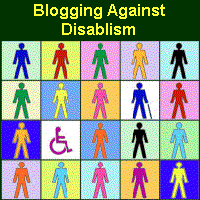So yesterday I complained about feeling stuck in the middle between pro-life idealism and those progressive policies I think are most likely to actually curb the abortion rate. But today I’m thinking about practical solutions. There are a few I’ve been advocating and supporting for a long time, but I want to crowdsource a bit: What are some key initiatives (both domestically and globally) around which conservatives and liberals could rally that would address the underlying causes of abortion: poverty, expensive healthcare, expensive childcare, lack of access to contraception and comprehensive sex education, domestic violence, etc? If I find the time I’ll share the best in a blog post. Thanks for weighing in! (And let’s keep it positive and practical!)
I love talking about ways to address the underlying issues that lead to abortion. There’s so much that we can do to prevent abortions — IF, as an early feminist wrote in The Revolution, “We want prevention, not merely punishment.” My reply:
***
As other commenters have said, affordable and easy access to contraception is important. The less often people have to go pick up prescription refills, the better — there was a study in L.A. that showed that allowing low-income women to get twelve months’ worth of pills at a time decreased the odds of unintended pregnancy by 30%, and the odds of an abortion by 46%. Even better, IF a woman freely chooses them and can have them removed upon request, are long-acting reversible contraceptives like IUDs and implants that don’t require any action to be taken once they’re in. In general, humans are not great at taking a pill at the same time every day (not just contraceptives). LARCs also can’t be sabotaged by abusive partners.
Speaking of which, we also need to do more to stop rape, and to help women out of abusive relationships. Early research shows that counseling women who come to family planning clinics about reproductive coercion (asking about whether their partners hide their pills, threaten to hurt them or kick them out of the home if they use contraception, etc.) not only reduces unintended pregnancies among women in abusive relationships, it also increases the chance they’ll leave those relationships. Men who father children by rape must not be allowed to have custody or visitation. This is already the case in 35 or so states, but we need to finish the job.
Comprehensive and accurate sex ed, including instruction about how to be safe and responsible about sexual activity if one chooses to use drugs or alcohol.
School and workplace policies that are designed with the idea that workers are human beings who have lives outside of work, not just productivity machines. No more just-in-time scheduling. No more pregnancy discrimination. Paid maternity and paternity leave. Affordable child care.
Nobody should ever be in a position where they don’t feel like they can bear a child because they won’t be able to pay rent or feed their other kids. More power for workers would mean better wages, and a real social safety net (one that’s not premised on the false idea of recipients as moochers who need to be humiliated) would alleviate some of the financial fear that often leads to abortion. Better yet, a guaranteed basic income and/or a child allowance. It’s disgraceful that in a country as rich as ours, hundreds of thousands of abortions happen every year because mothers are afraid they can’t afford to give their children life.
***
The above comment was dashed off quickly, but I would also add perinatal hospice, so that abortion doesn’t seem like the only option for parents whose children are diagnosed in the womb with fatal conditions. Also, there needs to be community support for parents of children with disabilities. Asking them to go it alone, with all the added stress and expense and work that can be involved, overwhelms many parents. They can’t see themselves handling all that, especially if they also have other kids. They shouldn’t have to handle it without help.
And while it’s not a policy issue, in general we need to foster a sexual ethic that emphasizes care for the health and well-being of oneself, one’s partner, and for any child who might be conceived. Not just safe sex, but caring sex. Wise sex. Sex that acknowledges that we aren’t pleasure-seeking islands, but are connected to — and affect — our fellow human beings.


